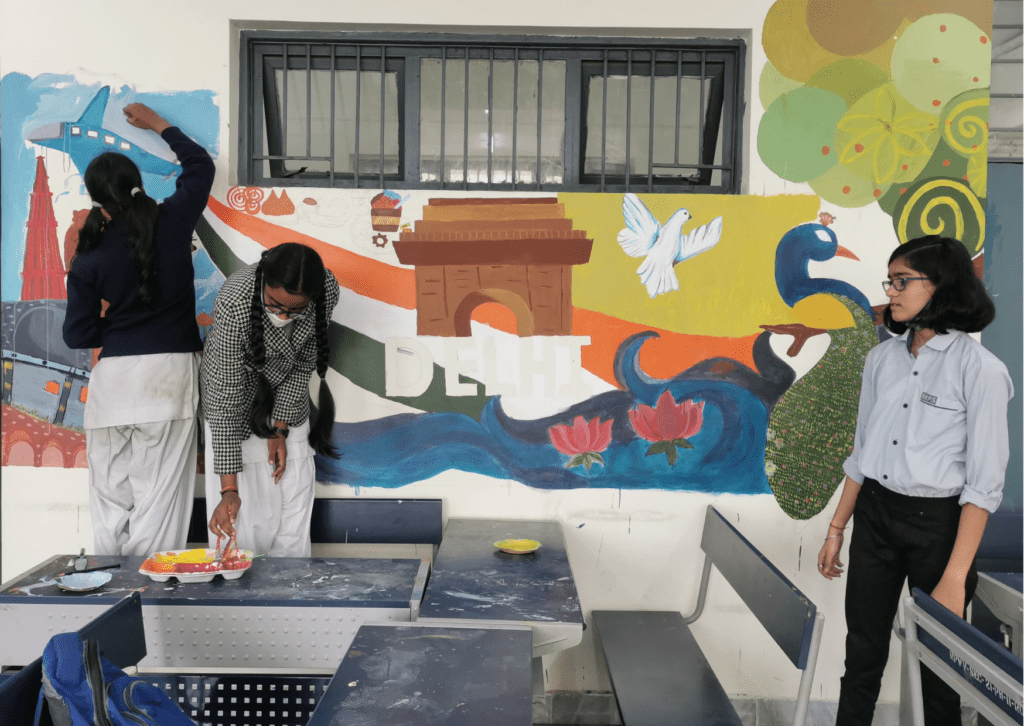
Arts-based techniques, in the past couple of decades, have gained prominence in the field of qualitative research. A departure from the traditional positivist inquiry that emphasises objectivity, statistical precision, and determinism that often reduces human experiences to singularities, arts-based research seeks a comprehensive understanding of individuals and the contexts they live in.
Criticality of Context
Arts-based inquiry recognizes the intricate lives people lead and complex criss-crossings of experiences within their environments. From variations in their dialects to nuanced cultural norms, experiences embedded in geographies and topographies, familial and personal histories, every individual is a story unto themself; starring in the lead role of this rich and colourful movie called life. Various modalities and techniques including but not limited to literary poems and prose, visual art (drawings, quilting), media art (installations, graphic novels, comics), performative art (dance, theatre), soundscapes, photography, etc. are all used to collect rich and meaningful qualitative data.
Examining the Outward to Look Inward
Such interpretive forms of research rely on co-creating narratives. Space is provided for participants to reflect on external artistic stimuli, often created themselves, such as visual artwork, poetry, or even film. Curiosity propels the researcher to take on the role of a learner, eliciting responses from the participant. Therefore, the participant and the researcher work together to unpack lived experiences with respect to a specific phenomenon. The participants, as it turns out, are screenwriters of their movie too.
Empowered Voices
When it comes to the analysis of data, the process, yet again, is led by participants. Thick descriptions are sought and multiple layers of meaning – emotional, psychological, social and cognitive are peeled to unearth latent meanings from artistic stimuli. The researcher, using interviewing techniques of effective probing and prompting, guides this reflective process. The meaning-making, however, is done by the participants. This qualitative methodology, hence, is built on the foundation of actively creating spaces that empower participants, with their voices shaping the data and its interpretations. At the risk of overstating the pun, the researcher is the director of this movie.
Case for Inclusivity
Arts-based methodology is inherently inclusive. When the participants have disabilities, are children, or belong to diverse communities with linguistic and cultural plurality, such methods work wonders. They are also an apt choice when the topic under study is vague, difficult to verbalise thoughts around, or has the possibility of triggering traumatic memories.
That’s the thing with art; it binds a diverse range of people together, beyond the banality of facts and figures, categorical perceptions, ‘yes’s and ‘no’s’. Art transcends structures, in fact, challenges them, and in research, it seeks to, with complete openness, curiosity, and humility, understand the colourful spectrum of human experience.
At NalandaWay Foundation, art is the vehicle for change. Playing a key role in all our projects, the simple hypothesis is that art leads to good. Our work in the space of mental health and wellbeing especially with underserved communities in India has taught us to expand our understanding of evaluating our projects. We were propelled to look beyond Western psychometric tools and assessments that are non-contextual, align poorly with normative parameters of populations that we work with, and are generally self-administered. Low levels of literacy amongst participants, poor comprehension, and high likelihood to provide socially desirable answers add to this list. Our learnings led us to adopt arts-based methods in our monitoring and evaluation practices.
An Azim Premji Philanthropic Initiatives funded project aimed at enhancing the wellbeing of adolescents in Child Care Institutions in Tamil Nadu is an example. The lived experiences of adolescents and staff members of these institutions are being understood using creative elicitation techniques. Visual art is being used to understand perceptions of self, safe spaces, and wellbeing.
Arts-based research is an intuitive and comprehensive method of understanding people. In-depth insights and learnings emerge from such techniques that allow a better understanding of stakeholders and their experiences and enable taking informed decisions.
Written by Arushi Sharma, Senior Associate at NalandaWay Foundation. Arushi holds a Masters in Clinical Psychology with Positive Psychology being her area of research interest. At NalandaWay Foundation, she leads the Monitoring and Evaluation (M&E) vertical.

